
    
NASA AMES RESEARCH CENTER TOUR
|
|
NASA Ames Research Center, located at Moffett Field, California, was founded Dec. 20, 1939 as an aircraft research laboratory by the National Tour of NASA Ames Research Center (Friday, August 5, Time: 9:00am - 12:00pm). First come first serve (maximum number to be announced). Covers bus transportation to/from Crowne Plaza Cabana Hotel. NOTE: At this time registration for the tour is limited to U.S. citizens. If you are a U.S. citizen or permanent citizen, contact Gina Morello at gina.f.morello@nasa.gov (+1 650 604-4462) or Marj Burris at majorie.d.burris@jpl.nasa.gov (+1 818 393-1340).
|
NASA AMES RESEARCH CENTER (Click here for map and directions)
Vertical Motion Simulator (VMS)
http://www.aviationsystemsdivision.arc.nasa.gov/facilities/vms/index.shtml
The VMS offers much that is unique, two capabilities stand out. First, engineers can customize the system to simulate any aerospace vehicle, whether existing or in the design stage. One aircraft being designed at the VMS is a next-generation transport capable of flying in near-earth orbit. Second, simulations occur with high fidelity, the simulator reproduces the flight characteristics of an aircraft with a high degree of accuracy. This entails delivering realistic cues to the pilot in real time, so that the pilot perceives that the simulated aircraft responds just as quickly as a real aircraft. The VMS provides exceptional flexibility in the aircraft it simulates in part because of the Interchangeable Cab (ICAB). The interior of the ICAB can be modified to represent the cockpit of any aerospace vehicle. At the VMS, flexibility in both hardware and software allow the simulation of any aerospace vehicle. Powerful computers and custom-designed systems enable high-fidelity, real-time simulation.
Unitary Plan Wind Tunnel
http://www.nasa.gov/centers/ames/research/technology-onepagers/wind-tunnels.html
Development of space transportation vehicles requires significant wind tunnel testing to address configuration development for planetary exit and reentry challenges. The Ames Unitary Plan Wind Tunnel (UPWT) provides the unique environment (Mach number range, data quality, flow quality, productivity, etc.) and value required for this quest. The Unitary Plan Wind Tunnel (UPWT) located at NASA Ames Research Center (ARC) has been a key provider of test and evaluation services to the Mercury, Gemini, Apollo and Space Shuttle Programs. More recently the facility has been utilized in support of the Space Launch Initiative (SLI), X-37, and Orbital Space Plane (OSP) Programs. The UPWT is a closed circuit pressure tunnel consisting of two operation test sections, the 11 – foot by 11 – foot transonic leg and the 9 – foot by 7 – foot supersonic leg with a combined Mach number range from 0.2 to 2.5. Future Flight Central (FFC) http://www.aviationsystemsdivision.arc.nasa.gov/facilities/ffc/index.shtml NASA FutureFlight Central is a national Air Traffic Control/Air Traffic Management (ATC/ATM) simulation facility dedicated to solving the present and emerging capacity problems of the nation's airports. The two-story facility offers a 360-degree full-scale, real-time simulation of an airport, where controllers, pilots and airport personnel participate to optimize expansion plans, operating procedures, and evaluate new technologies. The facility has established a precedent for enabling stakeholders to achieve consensus through a common vision of the future.
NASA Advanced Supercomputer (NAS) Facility
http://www.nas.nasa.gov/
NAS' current high-end computing environment includes three supercomputers, and a 25-petabyte mass storage system for long-term data storage. The environment also includes two secure front-end systems requiring two-factor authentication, and two Secure Unattended Proxy systems for remote operations. Our in-house developed hyperwall-2 visualization system. The 128-screen hyperwall-2, is capable of rendering one quarter billion pixel graphics—provides a supercomputer-scale environment to visualize and explore the very large, high-dimensional datasets produced by NASA supercomputers and instruments. NAS' Data Analysis & Visualization experts offer both traditional post-processing and state-of-the-art concurrent visualization techniques to help users view, explore, and understand their massive amounts of scientific data.
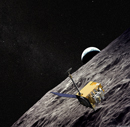
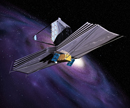
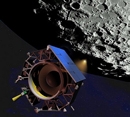
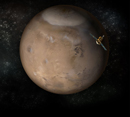



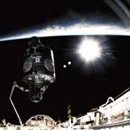

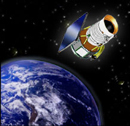




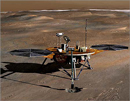

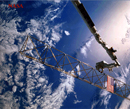



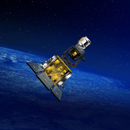

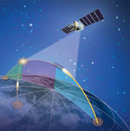




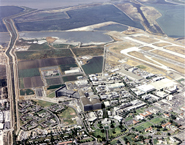 possible. Ames also is a leader in nanotechnology, fundamental space biology, biotechnology, aerospace and thermal protection systems, and human factors research. Ames research in astrobiology focuses on the effects of gravity on living things, and the nature and distribution of stars, planets and life in the universe.
possible. Ames also is a leader in nanotechnology, fundamental space biology, biotechnology, aerospace and thermal protection systems, and human factors research. Ames research in astrobiology focuses on the effects of gravity on living things, and the nature and distribution of stars, planets and life in the universe.